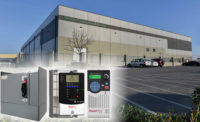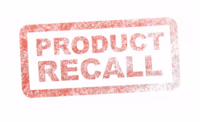
Government inspectors will be a more common presence in food and beverage facilities, adding to growing pressure for manufacturers to quickly document compliance to their HACCP and other food safety programs. Source: Northwest Analytical Inc.
More yawns than yelps greeted the provision in the 2010 Food Safety Reform Act requiring all food and beverage manufacturers to have a hazard analysis critical control points (HACCP) plan in place.
True, only meat and poultry processors and juice manufacturers were required by USDA and FDA to develop and implement HACCP plans at their facilities prior to the US Senate’s late-November approval of Senate Bill 510. In reality, the vast majority of US food and beverage manufacturers already have adopted HACCP: Research by the Aberdeen Group suggests 94 percent of production facilities have adopted HACCP. It is a prerequisite to doing business with major retailers and foodservice companies, and third-party audit standards under the Global Food Safety Initiative (GFSI) umbrella heighten the onus on manufacturers to have a food safety system that includes HACCP and documents the corrective actions taken when infractions occur.
A clipboard culture characterizes quality control, however, and a small mountain of checklists quickly builds up to document HACCP compliance. Two-thirds of the companies polled by Aberdeen indicated they rely on paper records, consistent with the 64 percent of Food Engineering readers who still use paper logs, according to the 2010 State of Manufacturing survey. Though the remaining third have adopted electronic records, often those records are little more than spreadsheets. Automation experts insist those systems fall well short of the data collection and historian systems that can produce reports on demand to validate HACCP activity.
One manufacturer’s finished goods often are another company’s raw materials, and the industry’s interdependency has been highlighted in several recalls in recent years. Melamine contamination in Chinese milk powder became a global problem in 2008. Confectioners in Europe and elsewhere suffered the most from the melamine recall, though North America was not so lucky in 2009 when peanut paste tied to Salmonella poisonings was recalled by hundreds of companies and involved thousands of products. “Nobody knew where their ingredients were coming from,” Craig Wilson, head of food safety and quality assurance for Costco Wholesale Corp., told attendees at Food Engineering’s 2010 Food Automation and Manufacturing Conference. As a consequence, “we started to require, as part of HACCP, that ingredients be traceable to a supplier that also has a HACCP plan.”
“Ingredient problems are causing the big companies to say, ‘We really need to get our arms around this,’” agrees Andrew Kennedy, president of FoodLogiQ, a Durham, NC supplier of quality management software. Unfortunately, complete product genealogies remain more goal than reality. “It’s like sex in high school: Everyone thinks everyone else is doing it, and the few who are doing it aren’t doing it very well,” Kennedy puckishly summarizes.
While food safety regulations and self-policing programs are careful to avoid prescribing solutions like automated data management, software vendors believe both the Modernization Act and GFSI-sanctioned audit programs will give food manufacturers a strong shove in that direction. In S. 510, the term HACCP doesn’t even appear. “Preventive controls” is its stand-in, and the term appears in Section 103, the bill’s key provision, according to Nikki Willett, vice president-product marketing & regulatory affairs at Tampa, FL-based Pilgrim Software Inc. The section specifies “science-based minimum standards for conducting a hazard analysis, documenting hazards, implementing preventive controls, and documenting such implementation.”
Satisfying those requirements makes constant revisions and updates necessary as part of a comprehensive food safety management system. Similar requirements exist in BRC, SQF 2000 and other food safety standards under the GFSI umbrella. “It’s not obtaining the GFSI certification that’s difficult; it’s maintaining that certification,” Willett points out. Major companies are concluding that GFSI necessitates an electronic data management system. “The new requirements put the food industry at the tipping point,” she says, adding, “we’re getting quite a bit of interest, with big companies especially asking for proposals.”

Control charts developed by ground beef suppliers to the Agricultural Marketing Service’s school-lunch program use coliform counts as a quality indicator for raw materials. The information complements HACCP and other food safety data gathering. Source: Northwest Analytical Inc.
ROI calculations
The ability to react quickly to a third-party auditor or a public health inspector is important, but software suppliers typically promote other value propositions to manufacturers. HACCP management and quality systems are a tough sell, so automation firms often pitch inventory management improvements, waste reduction through statistical process control (SPC), better weight control and other benefits of automated data collection, storage and retrieval.Many in the software community thought the traceability requirements in the 2002 Bioterrorism Act would drive adoption of data management systems by food companies. That did not occur. Neither did follow-up regulations, such as FDA 306, which was established six years ago requiring manufacturers to produce in-depth, detailed shipping and receiving information within 24 hours. Better inventory management, on the other hand, has a clear ROI, and some software vendors began emphasizing that benefit.
“No one was too interested in FDA 306, and up until a few years ago, I couldn’t get anyone in the food industry to talk to me about traceability,” says David Miller, who heads Operations Technologies, a Greenville, SC software-as-a-service provider focused on supply chain control and compliance. “Even today, maybe 10 percent speak to us first about traceability; the rest are interested in inventory management. But if you automate collection of inventory, quality and HACCP data, there are some hidden jewels in the math.”
Unfortunately, jewels often go unpolished. Miller has worked with manufacturers that have data historians that continuously receive temperature readings from thermocouples and write them to a database, yet people continue to copy temperature readings on paper logs for HACCP purposes. “If they utilized electronic HACCP,” he says, “not only would they not have to go out on the floor, a supervisor could touch a button on his Kindle, confirm the temperature and, if it’s not right, be instructed what to do.”
Improved weight control often brings manufacturers to Hertzler Systems Inc., Goshen, IN, and real-time capture of this quality data has helped companies such as Hormel Foods save seven figures on a single line by reducing product giveaway. A positive experience with SPC for weight control often opens the door to more automatic data collection, according to Evan Miller, Hertzler’s president, “but the cost justification is coming from the material savings side.” The key is shifting from data snapshots of a process to automated tracking and alarming of individuals who can take corrective action immediately, not an hour or day later.
Sharing performance statistics with workers through data dashboards mounted prominently on the production floor is becoming commonplace. “Operators like to know where they stand on an hour by hour basis,” Hertzler’s Miller says. “It helps them act quickly when something is an issue.”
SPC has been the focus for Northwest Analytical Inc. (NWA) since its inception in the mid-1990s. Process monitoring and alerting is a core function of the Portland, OR firm’s system, but the industry’s concern with food safety and better quality management has caused NWA to expand its scope. In 2009, NWA added a quality information module to its automation solution to support reporting for HACCP, SOPs and prerequisite programs. “There are always overlaps with MES and other systems,” acknowledges Jeff Cawley, NWA’s vice president-market development, “and all the data must be readily retrievable” when auditors and government inspectors come to call. “Where we excel is in creating a centralized, organized database that is simpler to use for analysis and reporting.”
Whether the data relate to OEE, KPIs, process set points or metal detector events is irrelevant. “People need a systematic way to handle the data, do the analytics and present it in a systematic way that mimics existing paperwork or provides an advanced presentation,” says Cawley.
Product family tree
Quality management and HACCP compliance extend beyond the four walls of a manufacturer’s plant. A genealogical record of raw materials from the farm to the production process also is needed, and commodity suppliers are addressing that need (see related story on page 84). Those companies must build automated quality systems virtually from scratch. “Small farmers’ biggest investment in technology is a fax machine,” says Ed Treacy, vice president-supply chain efficiencies at the Produce Marketing Association, one of the commodity groups helping to build a technology infrastructure to support a raw materials genealogy.The food industry is following the path blazed in life sciences, where material suppliers not only must comply with safety and quality requirements, they must verify their suppliers are in compliance as a condition of doing business. “Brand owners understand that the real issue is managing the thousands of ingredients and materials from hundreds of suppliers,” says Sean Robinson, food & beverage industry manager for GE Intelligent Platforms, Charlottesville, VA. Those companies want their suppliers to document where their materials came from and what was done to them, but they also recognize the need to better document their own workflow, he says.
Workflow management also is emphasized by Rockwell Automation Inc. Michael Gay, who oversees the Milwaukee firm’s MES solution, describes his software as “a workflow engine,” prompting operators to conduct tests, record results and alarm supervisors when corrective action/preventive action is warranted. “We focus on the manual testing process,” Gay allows, but integration with automated SPC systems is seamless.
The gaps between MES and quality systems can lead to a data quagmire, Robinson warns. Challenged by an auditor to account for HACCP-related information for a single day’s production, one manufacturer spent six days and required 70 people to retrieve supporting paperwork. “We can isolate the data in less than an hour,” he states.
While HACCP management is an adjunct to the process management focus of MES, HACCP is the primary focus of other systems. An example is TrackWise, billed as audit management software by Sparta Systems, Holmdel, NJ. HACCP plans are subject to continuous changes and updates, Sparta’s Katie Dowling, senior solutions consultant, notes. “We manage the process of changing that document.”
Software to guide development of a HACCP plan also exists, including a how-to system devised in 1994 with the objective of converting standard classroom methods into a software tool. Norback Ley & Associates calls it doHACCP, a step-by-step approach to identifying cross-contamination risks, establishing CCPs and developing a reliable methodology. It is part of a suite of HACCP software written by John Norback, a mathematician and professor emeritus at the University of Wisconsin. Small USDA-inspected food companies are the primary audience, though many large manufacturers and trade groups have used the reference tools, according to Kathy Ley, co-owner of the Middleton, WI firm.
“There are HACCP consultants who still use manual methods, crunching out the forms in word processing and then losing data as it moves from form to form,” Ley says. “We see it as an education-planning-implementation-maintenance problem.”
“Software in and of itself is not a solution,” notes Eddy Azad, CEO of Brea, CA-based Parsec Automation Corp. “Some data collection can be automated; some has to be facilitated by people. Regardless of how it is collected, an effective HACCP solution must be well architectured and archived. It isn’t a trivial matter, and there will be costs involved.”
That statement would have been a deal killer in years past but no longer. The expense of recalls, the resulting damage to a company’s image and the negative impact on public perceptions of the safety of the food supply coalesced industry support for more stringent food safety management systems, particularly among the largest food companies. Opposition to the Food Safety Modernization Act was almost nonexistent: Except for complaints primarily from the produce sector over the exemption of suppliers with limited geographic distribution and revenues of less than $500,000, the legislation was supported by 73 senators in a chamber where even nuclear arms control meets resistance.
Insurance underwriters also are paying closer attention to the interlinking relationships between food companies and their exposure to the actions of their clients’ suppliers, adds Operations Technology’s Miller. “For the first time, they are interested in traceability,” he says.
Even without the Modernization Act, food manufacturers will face more demanding reviews of their food safety programs. Speaking at the Institute of Food Technologists’ annual conference, attorney Joseph Levitt, former director of the FDA’s Center for Food Safety and Applied Nutrition, noted key changes in the legislation would be imposed administratively if necessary, including mandatory access to manufacturers’ HACCP records. “This is a very big deal,” Levitt said, and the changes are consistent with industry-supported efforts to crack down on weak links in the supply chain.
Hard-dollar return has been the litmus test for automation investments, which made electronic recordkeeping a tough sell. With rapid reporting becoming a condition of doing business, automated capture and storage of HACCP records are being viewed in a new light.
For more information:
Andrew Kennedy, FoodLogiQ, 919-484-4400, akennedy@foodlogiq.com
Sean Robinson, GE Intelligent Platforms, 434-978-5000, sean.robinson@ge.com
Evan Miller, Hertzler Systems Inc., 574-533-0571
Kathleen Ley, Norback, Ley & Associates, nla@norbackley.com
Jeffrey Cawley, Northwest Analytical Inc., 503-224-7727, jcawley@nwasoft.com
Eddy Azad, Parsec Automation Corp., 714-996-5302, eazad@parsec-corp.com
Nikki Willett, Pilgrim Software Inc., 813-915-1663, willettn@pilgrimsoftware.com
David Miller, Operations Technologies, 864-787-3971
Mike Gay, Rockwell Automation, 414-382-2000
Katie Dowling, Sparta Systems, 732-203-0400

KPI dashboards on the shop floor are proving to be popular performance-improvement tools in food and beverage plants, like Starbuck’s Sandy Run, SC roasting facility. By displaying quality data as well as productivity metrics, personnel can respond to variances before they become safety issues.
Traceability initiative mines quality data
Records management is the Achilles heel of HACCP programs, and the documentation required by more rigorous third-party plant audits is aggravating the situation. The ability to quickly retrieve records of events and the corrective actions taken saves time and money when the auditor is on site, and that is one of the most compelling arguments for software solutions. Food Engineering’s Essential Guide to Manufacturing Software provides a starting point for evaluating and selecting potential solutions. Software providers and their websites include:APEX Software Development www.apexsoftdev.com/www.factorywidgets.com
Batchmetrics www.initechinfo.com
CAT Squared www.catsquared.com
CSB System International www.csb.com
FoodLogiQ www.foodlogiq.com
GE Intelligent Platforms www.ge-ip.com
Hertzler Systems www.hertzler.com
IFS North America www.ifsworld.com
Itelligence www.itelligencegroup.com
Norback, Ley & Associates www.norbackley.com
Northwest Analytical www.nwasoft.com
Oracle www.oracle.com
Parsec Automation www.parsec-corp.com
Pilgrim Software ww.pilgrimsoftware.com
Plex Systems www.plex.com
ProcessPro Software www.processproerp.com
Rockwell Automation discover.rockwellautomation.com/information
Sage North America www.sagenorthamerica.com
Schneider Electric www.schneider-electric.us
Technology Group International www.tgiltd.com


